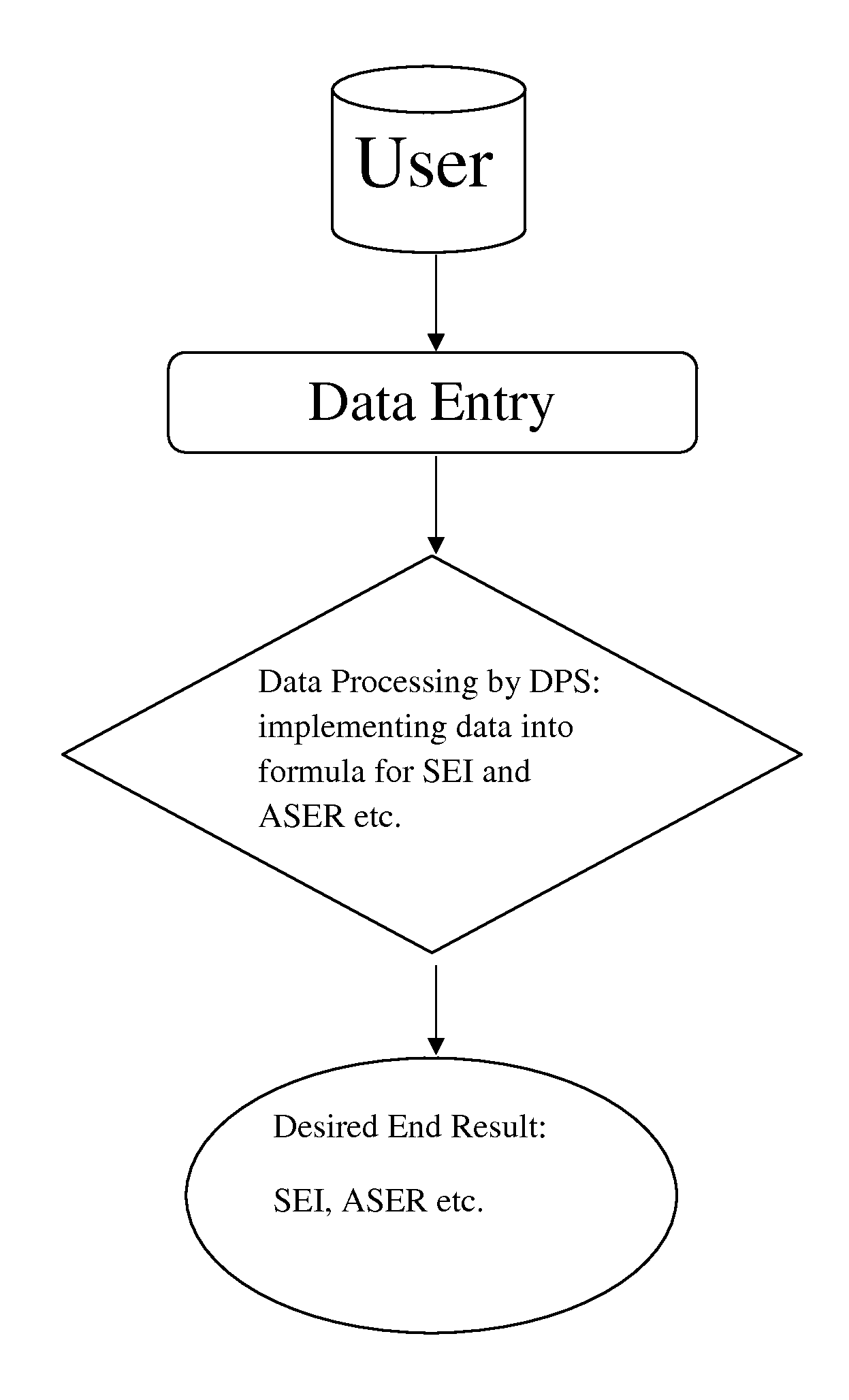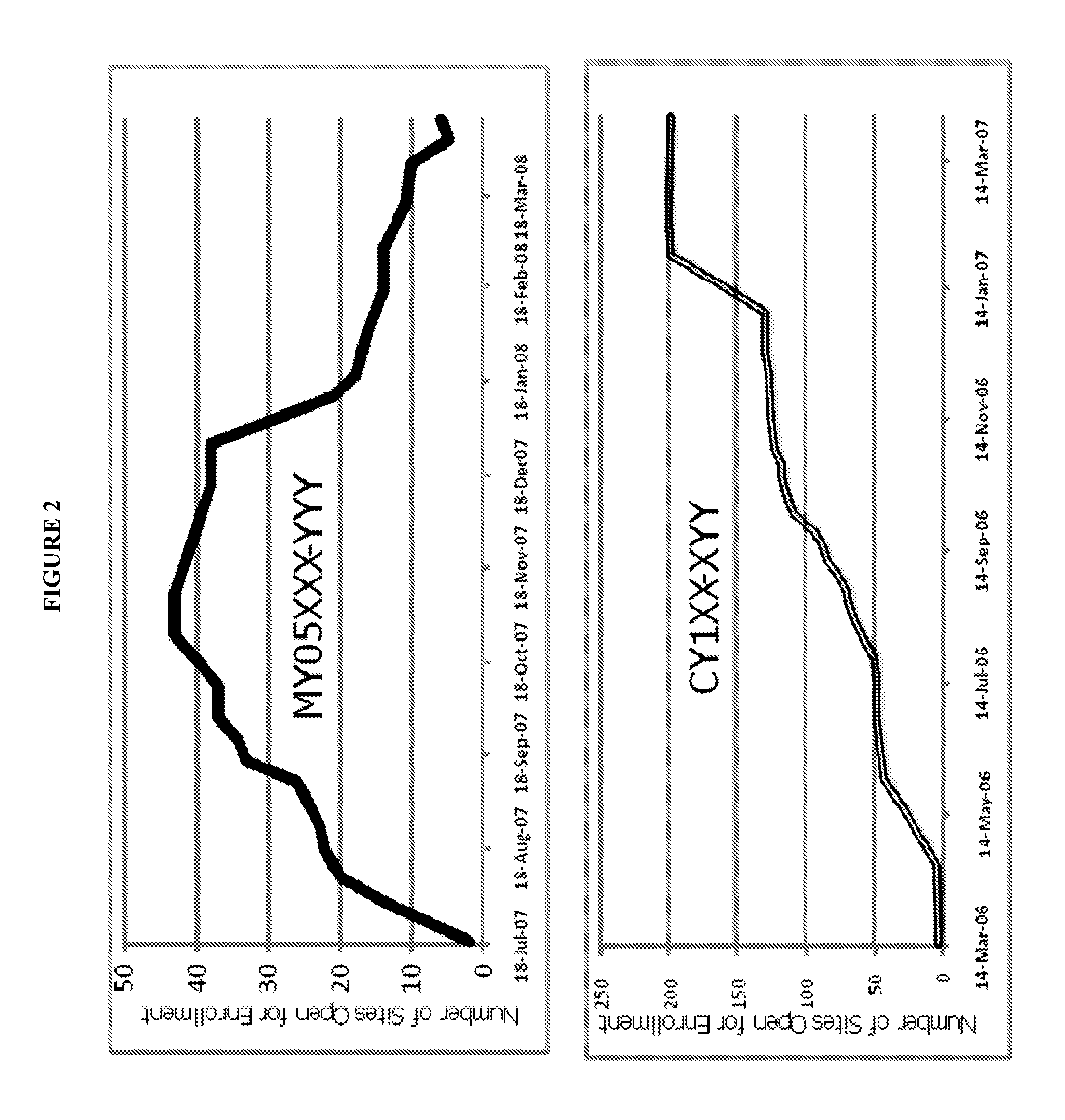Site effectiveness index and methods to measure and improve operational effectiveness in clinical trial execution
a clinical trial and operational effectiveness technology, applied in the field of clinical trial operational effectiveness improvement, can solve the problems of inability to meet the needs of clinical trial participants, lack of structure and objectivity, and sometimes worsening, and achieve the effect of improving operational effectiveness in clinical trial execution, reducing cycle time and financial savings
- Summary
- Abstract
- Description
- Claims
- Application Information
AI Technical Summary
Benefits of technology
Problems solved by technology
Method used
Image
Examples
example 1
Define Operational Boundaries and Quantitative Operational Improvement Opportunities
[0049]Step 1: Use a protocol synopsis of a planned clinical trial as a guidance to identify clinical trials in similar disease condition. Extract from a database historical operations data, including number of investigator sites open for patient enrollment at different point of time along the timeline between first subject first visit (FSFV) and last subject first visit (LSFV), and last subject last visit (LSLV), design of the study, key inclusion exclusion criteria, targeted number of patient enrollment, milestones including FSFV and LSFV, the company sponsoring the clinical trial, intervention(s), disease condition(s), and protocol identification(s) from sponsor(s). In the present example, diabetes is chosen as the disease condition, and the PhESiTM database is the source for historical operations data. Two examples of site activation curve charts are shown in FIG. 2.
[0050]Step 2: Data normalizatio...
example 2
Measuring Site Activation
[0060]There are different ways to measure effectiveness in trial site activation. The cycle time of site activation is one. Site activation starts from the time the first site is activated or initiated, and ends when the last site is activated. The less time between the first site activation and the last site activation, the more effective the overall activation process will be. As in the process of enrollment, site activation cycle times depend on many variables, making it difficult to compare one clinical trial against another.
[0061]Site Effectiveness Index (SEI) disclosed herein defines how effectively selected sites in a clinical trial are utilized. There are two ways to measure SEI. One is the percentage of selected sites open for enrollment over the duration of the enrollment cycle time. Another is from a single participating site perspective; its percentage of time open for enrollment compared to the overall clinical trial enrollment duration. As a pe...
PUM
 Login to View More
Login to View More Abstract
Description
Claims
Application Information
 Login to View More
Login to View More - R&D
- Intellectual Property
- Life Sciences
- Materials
- Tech Scout
- Unparalleled Data Quality
- Higher Quality Content
- 60% Fewer Hallucinations
Browse by: Latest US Patents, China's latest patents, Technical Efficacy Thesaurus, Application Domain, Technology Topic, Popular Technical Reports.
© 2025 PatSnap. All rights reserved.Legal|Privacy policy|Modern Slavery Act Transparency Statement|Sitemap|About US| Contact US: help@patsnap.com



